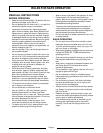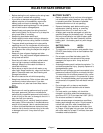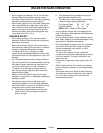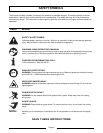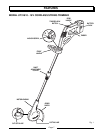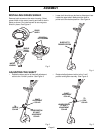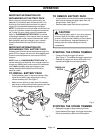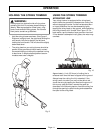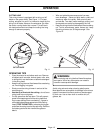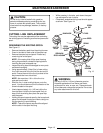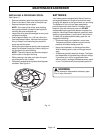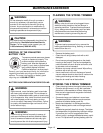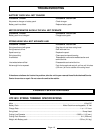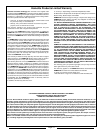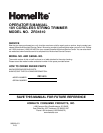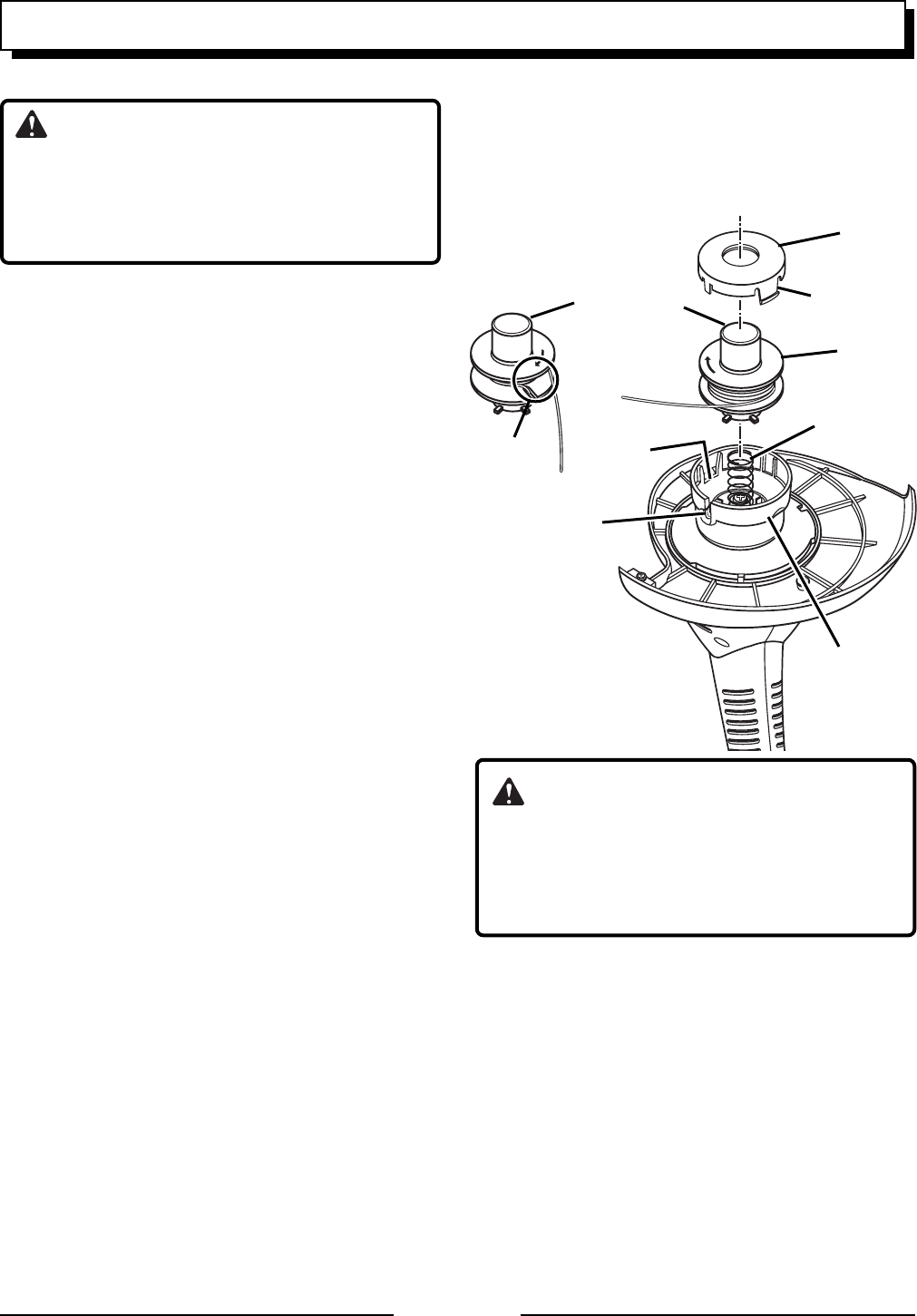
Page 13
R
E
W
R
E
W
N
I
D
L
I
N
E
MAINTENANCE AND REPAIR
CUTTING LINE REPLACEMENT
The cutting line may be replaced by either rewinding
the existing spool or installing a convenient prewound
spool.
REWINDING THE EXISTING SPOOL
See Figure 13
.
• Remove the battery pack from the string trimmer.
• Press in the tabs on each side of the spool cap.
• Remove the spool cap and spool. Discard any
remaining line on the spool.
NOTE: If the spring falls off the spool housing
during this procedure, reinstall the spring before
installing the spool and spool cap.
• Inspect the string head for damaged or worn parts
and clean thoroughly.
• Using approximately 10 feet (3 m) of new cutting
line, insert one end of the line into the slot on the
spool. Ensure the end of the line is pushed all the
way towards the inner side of slot.
NOTE: No more than 1/8 in. of the line is to
protrude from the slot.
• Wind the line, in even and tight layers, onto the
spool. Line should be wound in the direction of the
arrow indicated on the spool.
• Unwind approximately 4 in. (102 mm) of the line
from the spool. Hold the line and spool firmly to
keep it from unwinding then place the spool cap
onto the spool.
• Holding the spool cap and spool by the bump knob,
place into the spool housing and insert cutting line
into the opening in spool housing.
NOTE: Tabs on the spool cap should be aligned
with the slots in the spool housing.
SLOT ON
SPOOL
TABS
SPOOL
CAP
BUMP KNOB
SPOOL
SPRING
SPOOL
HOUSING
SLOT
OPENING IN
SPOOL HOUSING
SPOOL
HOUSING
Fig. 13
• While pressing in the tabs, push down the spool
cap and spool to lock in place.
• Completely assembled string head should appear
as shown.
See Figure 14
.
WARNING:
Use only 0.065 in (1.65 mm) diameter genuine
Homelite replacement line. Never use metal-
reinforced line, wire, or rope, etc. These can break
off and become a dangerous projectile. Do not use
any other attachment on this unit.
CAUTION:
Do not at any time let brake fluids, gasoline,
petroleum based products, penetrating oils, etc.,
come in contact with plastic parts. They contain
chemicals that may damage, weaken, or destroy
plastics.



